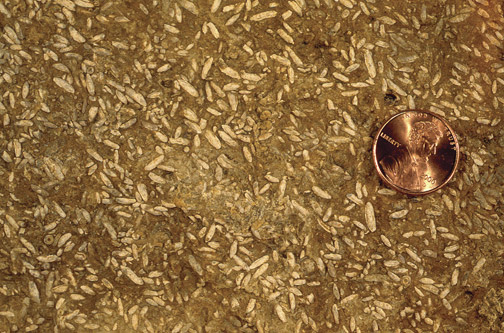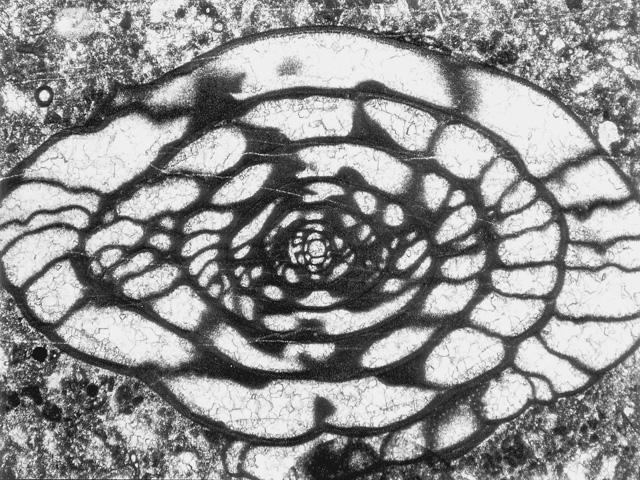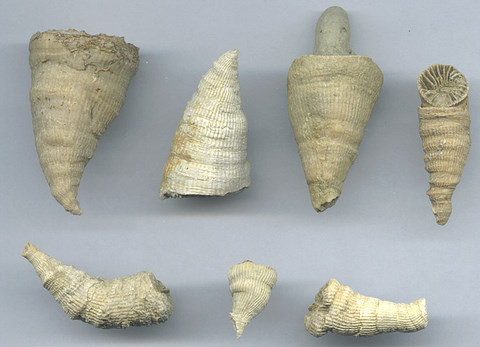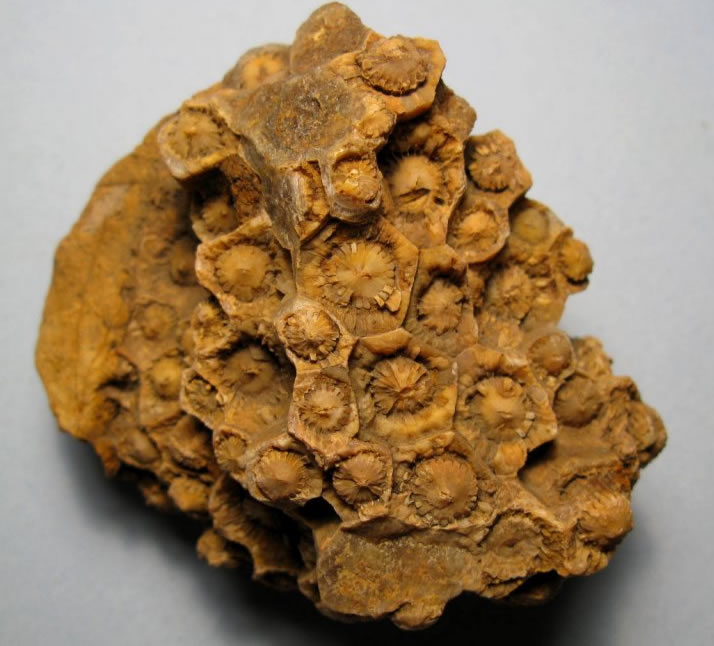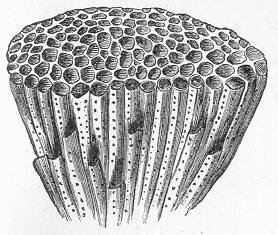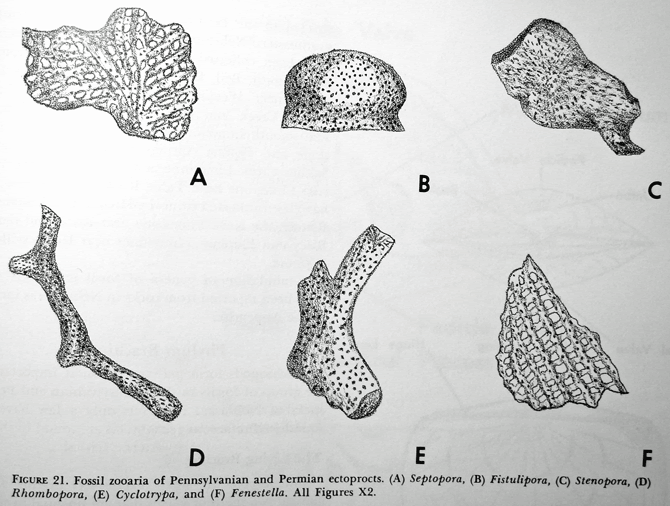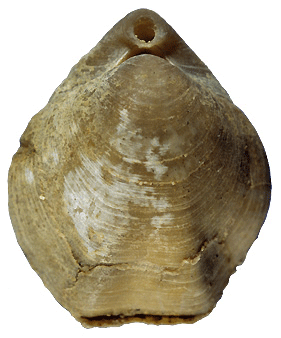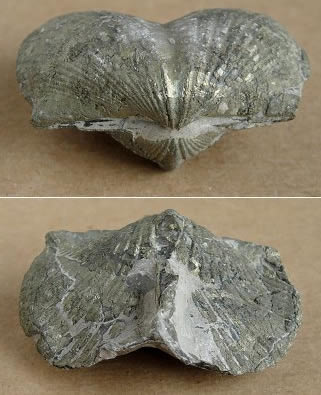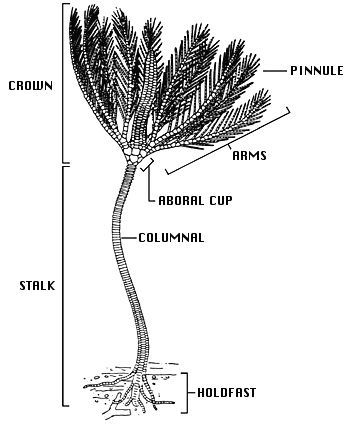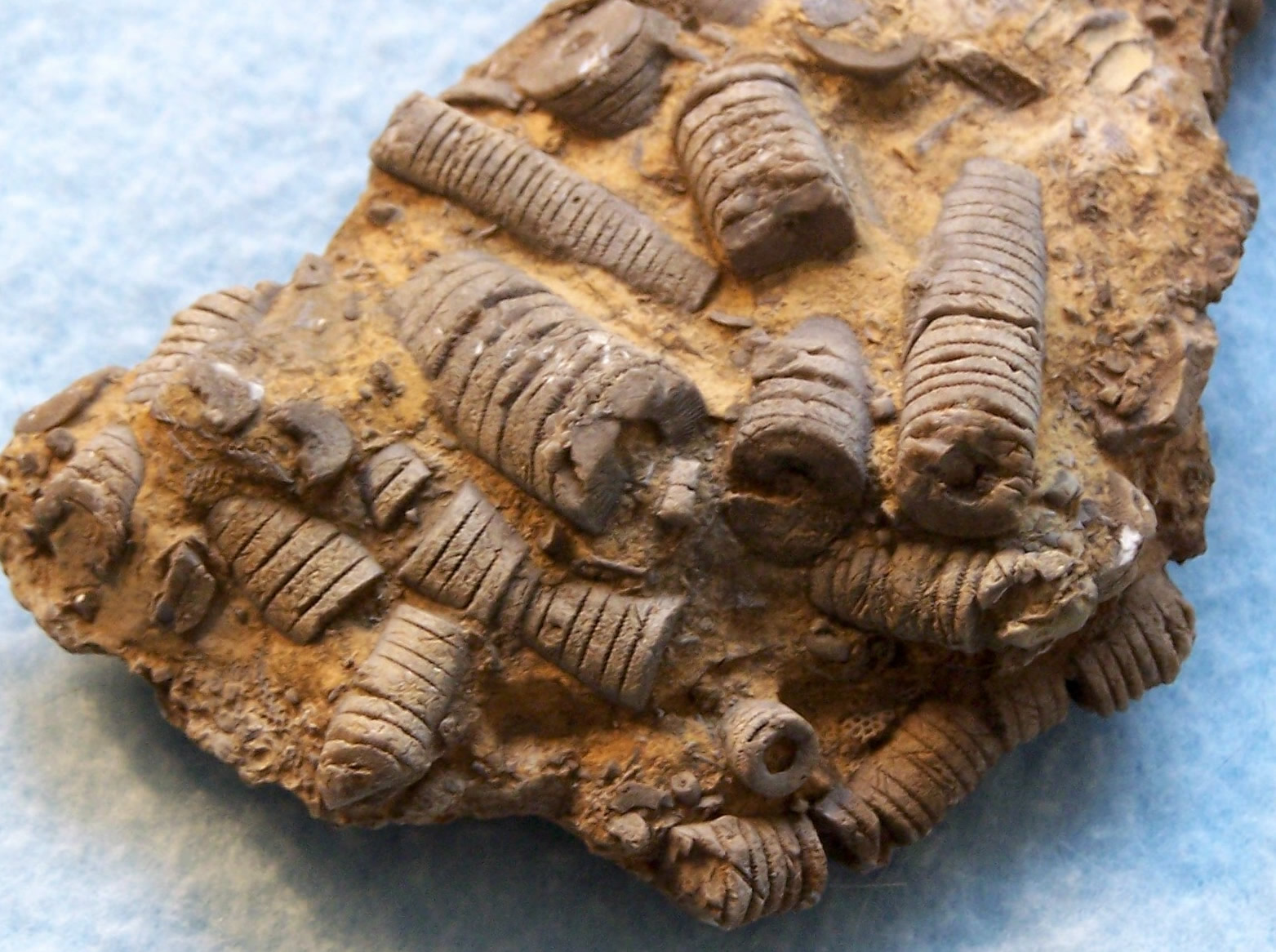Paleozoic Flora and Fauna of Nebraska
During the Paleozoic Era, the earth was home to a number of creatures - many of which looked very different than present-day organisms. At the end of the Paleozoic, the largest extinction event in earth history occurred. This is known as the end-Permian Mass Extinction. Creatures that lived in the shallow marine environment were the most affected, with approximately 95% of marine species going extinct.
*For more information on the end-Permian Mass Extinction, check out THIS SITE created by the University of Bristol- Dept. of Earth Sciences
The flora and fauna listed below are those that are most commonly found within the Pennsylvanian - Permian rocks which crop out to the surface in the southeastern corner of Nebraska.
Shallow Marine Critters
(the following creatures are often found in late Paleozoic limestone rocks)
Fusulinids
Fusulinids are part of the Phylum Foraminifera. These one-celled organisms are quite large compared to other Protozoans. Their shells resemble a grain of rice, with respect to both size and shape. They were benthic creatures that moved upon the sea-bottom muds, eating other tiny organisms. Fusulinids are abundant in Nebraska's late Paleozoic rock record. They become extinct at the end of the Permian.
Corals
The corals that existed during the Paleozoic were distant relatives to our modern reef-building corals. Two major groups (both of which went extinct at the end of the Permian) existed within Nebraska's shallow seas:
1 - Rugose corals include species that were colonial and solitary. The solitary forms are also known as "horn corals" due to their distinct horn shape. These creatures (polyps) created a skeleton made of calcite, which sat upon the seafloor, and is often well-preserved in the rock record. **Random Trivia-Rugose corals are the Nebraska state invertebrate fossil!
2 - Tabulate corals only formed colonies. They built tubular skeletons that fused and twisted together to create bigger structures. The individual animals are typically smaller than rugose corals; however, their colonies were comparable in size.
Bryozoans
Bryozoans ("moss animals") are colonial organisms that never live on their own. Individual bryozoan animals, called zooids, are very tiny (only ~1mm or less across). The colonies often grow in hemispherical lumps or branching twiglike shapes and are covered with tiny openings, which sheltered the animals. Many bryoaoans go extinct at the end of the Paleozoic; however, some forms do survive, and their ancestors are still living today.
|
Many species of bryozoa are often found in Nebraska's late Paleozoic rocks.
A) forms large fans
B) forms an encrusting, rounded colony
C) often found encrusting over other animals shells
D) forms a colony that looks like a miniature log of wood
E) forms large branches
F) grows in a fine, lacy form
*This picture comes from (Pabian, 1987)
|
Brachiopods
Brachiopods are a group of marine shelled creatures, which still exist today. During the Paleozoic they were prolific in shallow marine communities. They resemble clams (mollusks) but exhibit two major morphological differences - the lower and upper shells of the brachiopod are different shapes (mollusks display similar shells), and brachiopods are symmetrical (while mollusks are not). Two common groups of brachiopods can be found in Nebraska's Pennsylvanian-Permian strata: Productids & Speriferids.
|
Productid brachiopods, such as the one in the picture to the left, had many spines attached to their shell; however, these are not typically preserved intact. The spines raised the brachiopod above the soupy, muddy seafloor.
Productids went extinct at the end of the Paleozoic Era. http://www.paleo.pan.pl/people/Bitner/Pictures/Bitner-brachiopod.gif |
|
Spiriferid brachiopods, such as the one pictured at left, have wider shells than productid brachiopods.
Spiriferids were affected by the difficulties at the end of the Paleozoic; however, they were able to persist on into the Mesozoic Era. http://geology.about.com/library/bl/images/blbrachiopod.htm |
Echinoderms
Crinoids (sea lilies) are the most common echinoderm preserved within Nebraska's Paleozoic fossil record. When a crinoid dies, the skeletal plates break up. The stalk (stem) contains the greatest number of plates, and therefore are the most abundant part of the crinoid skeleton found in the rock record. Crinoids attached themselves to the sea-bottom and exhibited feathery arms which spread out to capture food particles within the water column. At the end of the Permian, most crinoid groups went extinct; however, one subclass (Articulata) still exists today.
Mollusks
This phylum includes clams, snails, and cephalopods - all of which flourished during the late Paleozoic and persisted through the Permian Mass Extinction.
Other Fossils
The shallow marine critters listed above are the most common fossils found in Nebraska's Paleozoic rocks; however, other fossils can be found, such as:
- Shark Teeth - can be found in limestone rocks or shales.
- Fish - their teeth are often found in limestone rocks; however, in black shales it is also possible to find a whole skeleton. Whole skeletons have typically been flattened and reduced to only thin layers of carbon.
- Fossil Plants - such as giant horsetails, ferns, and tree ferns.
- Coprolites - fossil feces can be found within the black shales; they are cream-colored carbonate nodules which preserve what animals (such as sharks) ate.
The information on this webpage was acquired from the following sources - check them out for more information on Nebraska's fossil record:
Maher, H.D., Engelmann, G.F., and Shuster, R.D., 2003, Roadside Geology of Nebraska, Mountain Press Publishing Company, 264p.
Pabian, R.K., 1987, Record in Rock: a handbook of the invertebrate fossils of Nebraska, Educational Circular No.1, University of Nebraska-Conservation and Survey Division, 99p.
Back to Paleozoic Home Page
